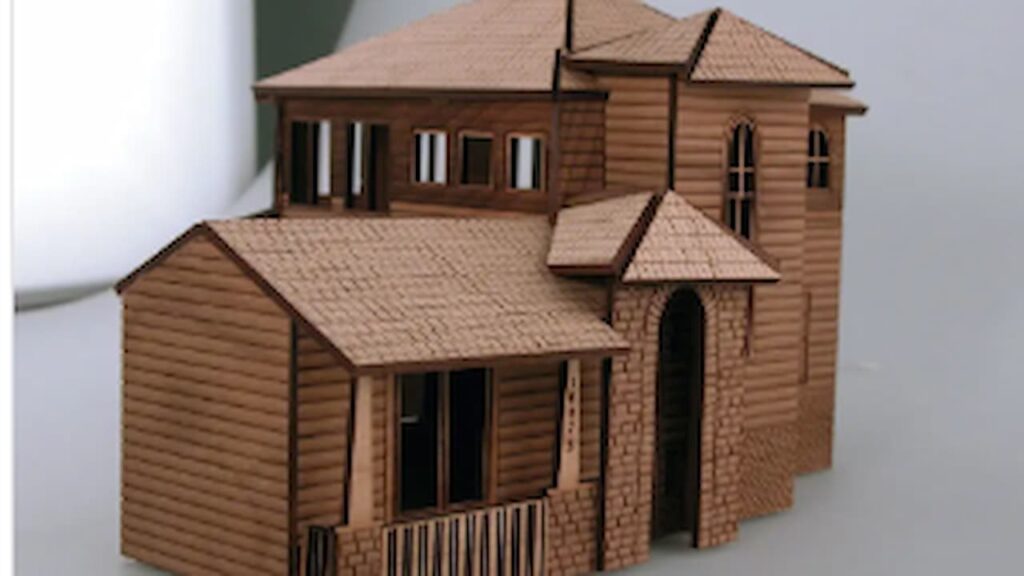Technical drawing, also known as drafting, is an essential skill used in a wide range of industries, including architecture, engineering, product design, and manufacturing. It involves the creation of accurate and precise drawings that communicate technical information in a clear and concise way. Technical drawing is an integral part of the design and production process, providing a visual representation of the object or structure being designed, as well as detailed information about its dimensions, materials, and construction.
1 – Make plans for DIY woodworking projects by Roajohn
Select the package that suits your requirements for easily printable digital plans of superior woodworking quality. You’ll obtain a comprehensive PDF containing all the necessary details for commencing and completing your exquisite woodworking venture.
2 – Create models for laser and plasma cutting by Madelemara
I am a Mechatronics Engineer skilled in:
- Employing SolidWorks for design and drafting purposes
- Conducting analysis simulations
- Assembling components and producing animated videos of their movements
- Transforming point data into 3D models
- Generating DXF files for laser-cutting purposes
- Utilizing 3D printing techniques for creating parts.
3 – Provide mechanical engineering solution and engineering drawings in solidworks by Promofb
I am a professional mechanical engineer with 6 years of experience in CAD designing. I am interested in product designing, machine designing, simulations, analyzing, calculations and everything under mechanical engineering.
I will perfectly help you in the following fundamental areas of mechanical engineering including:
- Drafting, computer-aided design (CAD), and computer-aided manufacturing (CAM)
- Engineering machine and product designing mechanism and Machine design (including kinematics and dynamics)
- Hydraulics, and pneumatics
- Mechatronics, and robotics
- Manufacturing engineering, technology, or processes
- Statics and dynamics
- Strength of materials and solid mechanics
- Materials engineering, Composites
- Thermodynamics, heat transfer, energy conversion, and HVAC
- Fuels, combustion, Internal combustion engine
- Fluid mechanics (including fluid statics and fluid dynamics)
- Instrumentation and measurement
- Vibration, control theory, and control engineering
4 – Make drawings for your patent by Iptractus
Different types of drawings have already been created to serve various purposes, including drawings for utility patents and design patents.
These drawings consist of both 3D and 2D illustrations, along with exploded views of drawing sets tailored to meet the customer requirements under Patent Law.
To obtain a design patent, a minimum of seven drawings must be submitted.
Orders will not be initiated until a prior discussion has taken place. It is recommended that the buyer first consults with the seller before placing an order.
5 – Create line drawings of the product by Muaazahmadkhan
Do you require assistance in transforming your ideas into a tangible reality? Whether you aim to produce an item or seek to illustrate your concept to attract potential investors, you have come to the right place.
I specialize in converting concepts into 3D models and providing 3D files that include photorealistic renders and drawings suitable for patent applications. Upon receiving your product idea, I utilize my expertise in design and engineering to help you fabricate a prototype.
My profile’s impressive 5-star rating is the culmination of my unwavering commitment and diligent effort. Don’t hesitate to contact me! Let’s collaborate and transform your concept into a reality.
FAQs
Why is technical drawing important to students?
Technical drawing, also known as drafting, is an important skill for students in a variety of fields, including engineering, architecture, design, and manufacturing. Here are a few reasons why technical drawing is important:
Communication: Technical drawing is a visual language that allows students to communicate their ideas, designs, and specifications with others. Technical drawings provide precise and accurate information that can be easily understood by others, regardless of their language or cultural background.
Precision: Technical drawing requires attention to detail and precision, which are essential skills in many professions. Students who learn technical drawing develop a high degree of accuracy and precision in their work, which can help them avoid mistakes and errors that can be costly or even dangerous in some fields.
Creativity: Technical drawing requires creativity and problem-solving skills. Students must be able to visualize complex designs and translate them into accurate and detailed drawings. This process requires a combination of analytical and creative thinking, which can help students develop their imagination and innovative skills.
Career Opportunities: Many professions require technical drawing skills, and students who are proficient in this area have a competitive advantage in the job market. The technical drawing is an essential skill for engineers, architects, product designers, graphic designers, and many other fields.
Overall, technical drawing is an important skill for students to develop, regardless of their career aspirations. It provides a foundation for visual communication, precision, creativity, and problem-solving skills, which are valuable assets in any field.
What are the major keys one should know about technical drawing?
There are several key aspects of technical drawing that students should be familiar with:
Standards: Technical drawing requires adherence to specific standards and conventions. These standards dictate how drawings should be labeled, dimensioned, and presented. Familiarity with these standards is essential for clear communication and accurate interpretation of drawings.
Geometry: Technical drawing relies heavily on geometry, including points, lines, curves, and planes. Students should be familiar with basic geometric concepts, such as angles, intersections, and symmetry, and should be able to apply these concepts to create accurate and precise drawings.
Tools and materials: Technical drawing requires the use of specific tools and materials, including pencils, rulers, compasses, protractors, and specialized drawing software. Students should be familiar with the proper use of these tools and materials to create accurate and detailed drawings.
Projection: Technical drawing often involves the representation of three-dimensional objects in two dimensions. Students should understand the principles of projection, including orthographic projection, isometric projection, and perspective projection.
Symbols and notation: Technical drawing uses specific symbols and notation to represent features such as dimensions, tolerances, and surface finishes. Students should be familiar with these symbols and notation to ensure accurate communication of information.
Revision and review: Technical drawing is often a collaborative process that involves multiple revisions and reviews. Students should be prepared to make changes and revisions to their drawings based on feedback from others and should be able to review the work of others to identify errors or areas for improvement.
Overall, technical drawing requires a combination of technical skill, attention to detail, and collaboration with others. By mastering these key aspects of technical drawing, students can develop the skills and knowledge needed to create accurate and effective technical drawings.
What is the difference between technical drawing and artistic drawing?
Technical drawing and artistic drawing differ in their purpose, approach, and level of detail.
The technical drawing is a precise and accurate form of drawing that communicates specific information, such as dimensions, materials, and assembly instructions. Technical drawings are created using drafting tools, such as rulers, compasses, and protractors, and are often used in engineering, architecture, and manufacturing. Technical drawings are typically created to convey specific information to others, such as builders, engineers, or manufacturers, and are not intended to be aesthetically pleasing.
Artistic drawing, on the other hand, is a more subjective form of drawing that is primarily focused on expressing ideas or emotions. Artistic drawings can be created using a variety of materials, such as pencils, charcoal, or paints, and can be created in a wide range of styles, from realistic to abstract. Artistic drawings are often intended to be aesthetically pleasing and can be used for a variety of purposes, such as illustration, fine art, or graphic design.
In summary, technical drawing is a precise and objective form of drawing used to convey specific information, while artistic drawing is a subjective form of drawing used to express ideas or emotions and create aesthetically pleasing images.
Final thought
the technical drawing is a vital skill that plays a critical role in many industries, from the initial design phase to the final production of a product or structure. The ability to create accurate and detailed technical drawings is essential for ensuring that designs are feasible, safe, and functional, and for communicating technical information effectively between designers, engineers, manufacturers, and other stakeholders. Whether you are an aspiring architect, engineer, or product designer, mastering the art of technical drawing can help you succeed in your field and bring your ideas to life with precision and accuracy.



